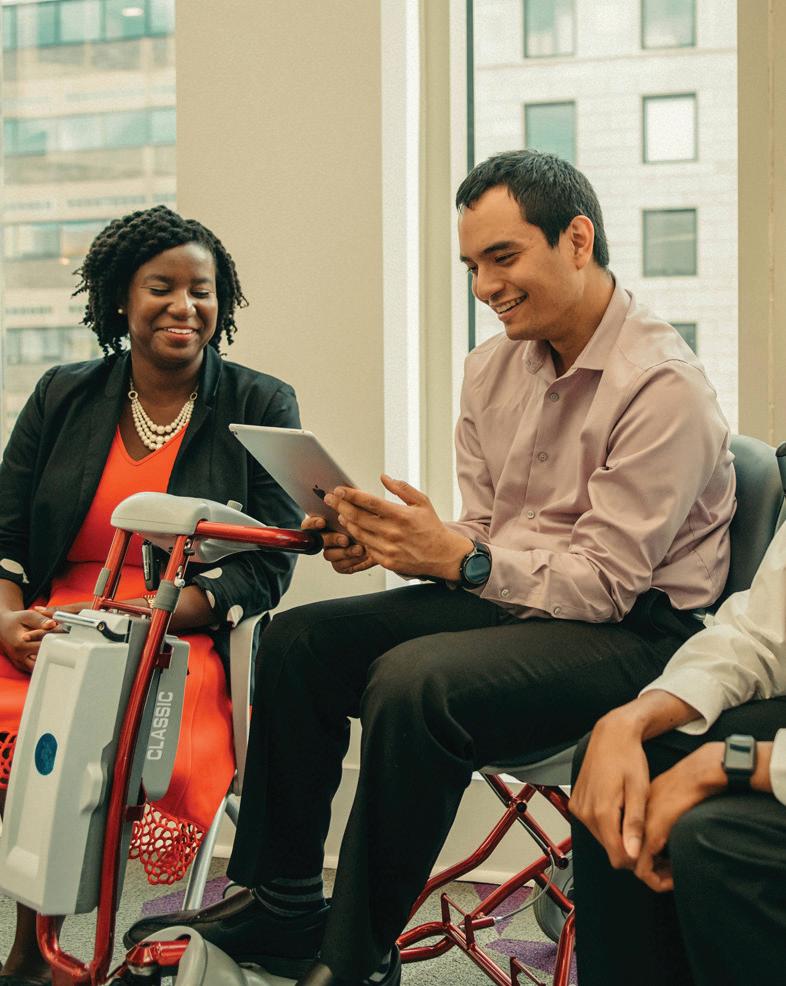
5 minute read
What is considered a disability?
Lesa Bradshaw
“Disability Inclusion” is a prominent topic among Human Resources, Transformation, and Business Executive stakeholders, driven by the imperatives of Black Economic Empowerment (BEE) compliance and the allure of Skills Development incentives, which are high on the business agenda. Despite the prioritisation of this agenda, statistics indicate minimal progress in terms of the representation of disability as a form of diversity within African organisations.

A recent survey by the World Health Organisation across 51 countries reveals a 52.8% employment rate for males with a disability and 19.6% for women with a disability. While these statistics underscore the double discrimination faced by women with a disability, the glaring fact that should be evident is how far behind African organisations are in their journey towards equal opportunities and inclusion. Taking South Africa as an example, the 18th Commission for Employment Equity Report shows that South African employers report the following disheartening results for the inclusion of persons with a disability in the meaningfully employed workforce:
• Top and Senior Management, as well as Professional Occupational Levels, reflect 1.3%.
• Semi-skilled and Unskilled Occupational Levels reflect 0.9%.
Overall, since 2015, these results indicate a significant decline in the representation of persons with a disability at all occupational levels. Essentially, as employers, we are moving in the wrong direction despite the increased focus on achieving compliance. At this point, I imagine that many of those reading this article are throwing their hands up in exasperation. “What are we doing wrong? We invest in learnership programmes and spend money on skills development for persons with a disability, so why are we not making headway?”
There is no doubt that the talent is out there, but the numerous barriers to inclusion continue to prevent the access of persons with a disability to permanent careers. Many organisations have been lured to the dark side of the ‘quick fix’ approach as the pressures of compliance loom before us. Scorecard strategies, which include those seen in many outsourced learnership programmes, simulated learnership solutions, and segregated off-site learnerships for persons with a disability, are detracting from efforts to build more disabilityinclusive organisational cultures. While these solutions may present as ‘hassle-free’ solutions to creating an inclusive disability culture, this is not the case in reality, as these solutions move disability inclusion from the transformation agenda to the compliance one, principally fuelled by financial efficiency and favourable Black Broadbased Economic Empowerment (B-BBEE) scorecard outcomes.
The results? Persons with a disability are continuously swirling around in a whirlpool of learnerships without gaining any meaningful, relevant work experience. In reality, due to the many exclusionary barriers within the educational and mainstream work and infrastructural environment, there is a relatively small pool of persons with a disability who have qualifications and workplace experience that allows them to access skilled and higher occupational levels of our workforce. Essentially, for any person with a disability who hopes to access the workforce, they must have a matric, must be able to access inaccessible environments, must be able to use inaccessible transport systems, must have work experience that cannot be gained from quick fix learnerships, and must know how to compete in an environment that places little work value on disability as an economically beneficial demographic.
What organisations need to realise is that to achieve sustainable inclusion and gain the competitive advantage of this untapped talent source, disability inclusion calls for employers to think creatively rather than competitively in their approach to sourcing, developing, empowering, and retaining talent with a disability at all occupational levels. It recognises that there are very few resources that support empowerment and inclusion in the disability space, and that a collaborative and committed approach to flexing the way we do things is necessary to pave the way toward sustainable inclusion. Disability inclusion is by no means a quick-fix solution. It demands a topdriven transformational commitment; it asks employers to move their focus from compliance to recognising the value that diversity in disability can bring to a business.
Inclusion can be and has been better achieved globally; therefore, there is no excuse for the Global South. Our entrepreneurial, tenacious, creative, and passionate spirit allows us to survive in business and remain competitive despite many hurdles. In my experience as a business owner with a disability, the advantage of insight into the realities of disability inclusion both practically and strategically has proven invaluable. This has allowed us to develop a model of inclusion that can be applied across different organisational cultures and industries, both nationally and globally. It can be done – but the starting point is to have the right conversation with those professionals who can guide you in a sustainable journey of inclusion that challenges the ‘status quo’ thinking and provides creative thinking in the disability inclusion space.











